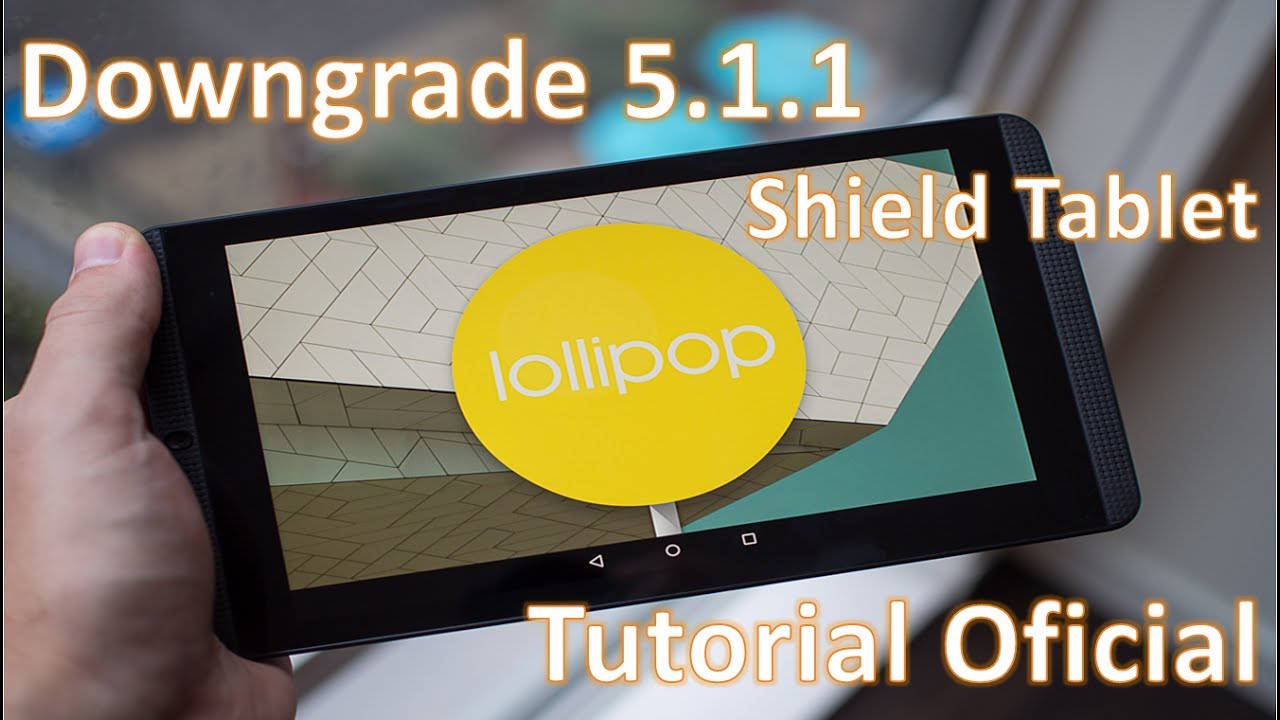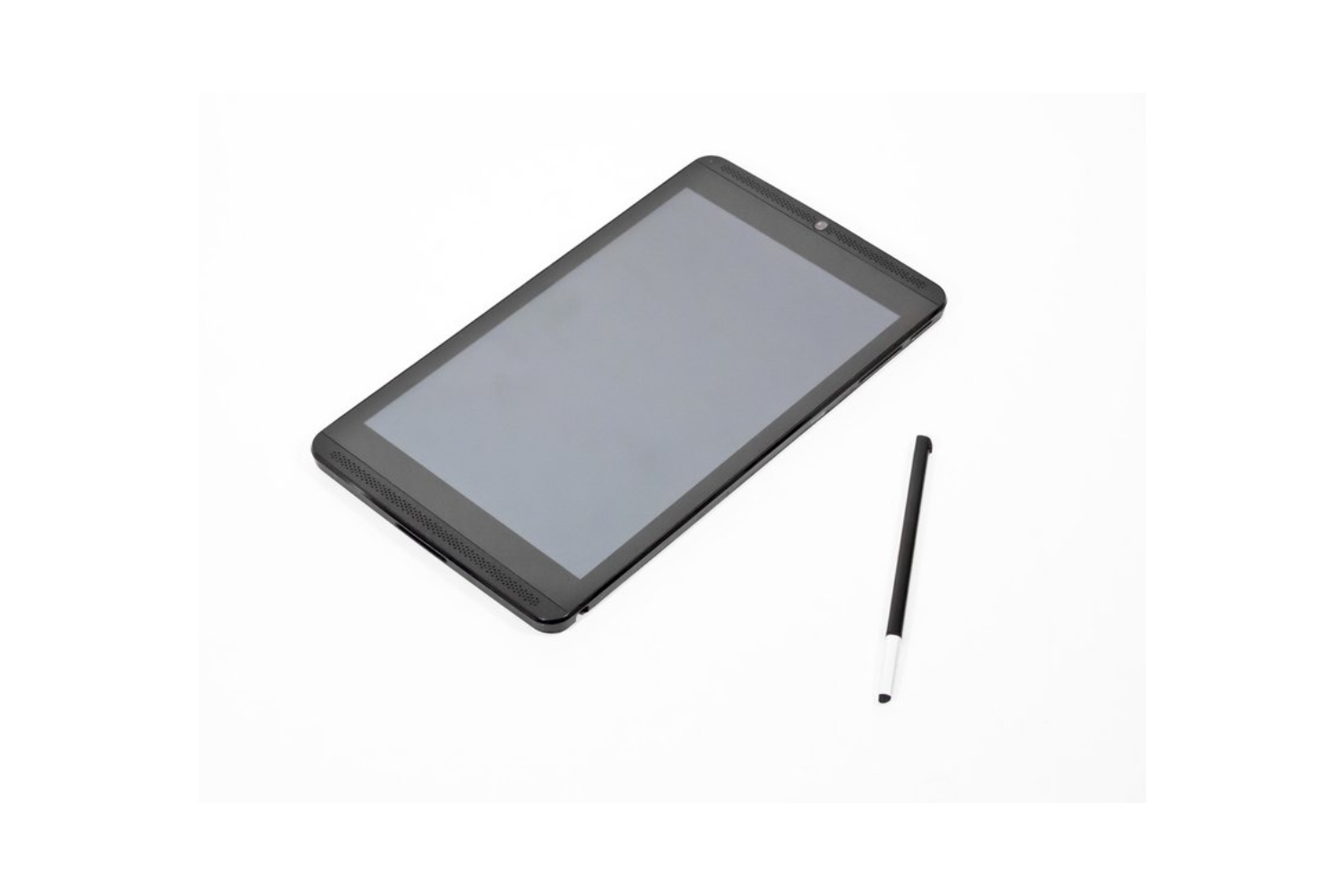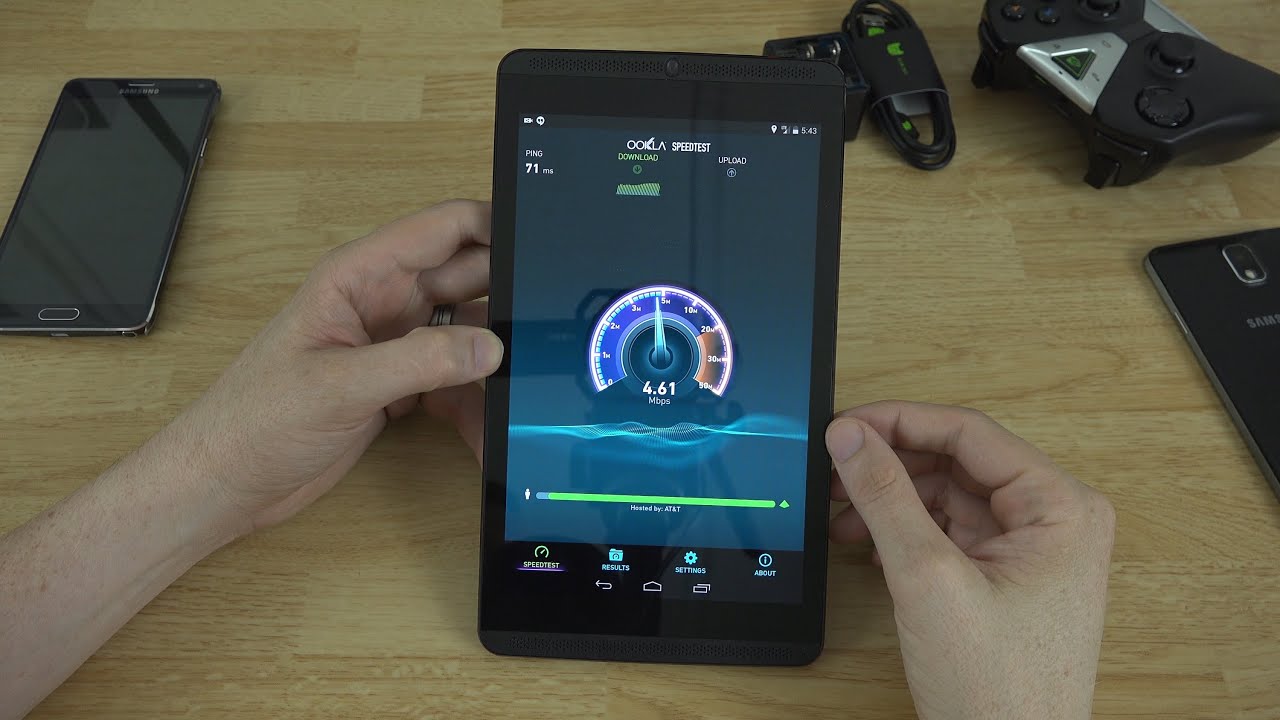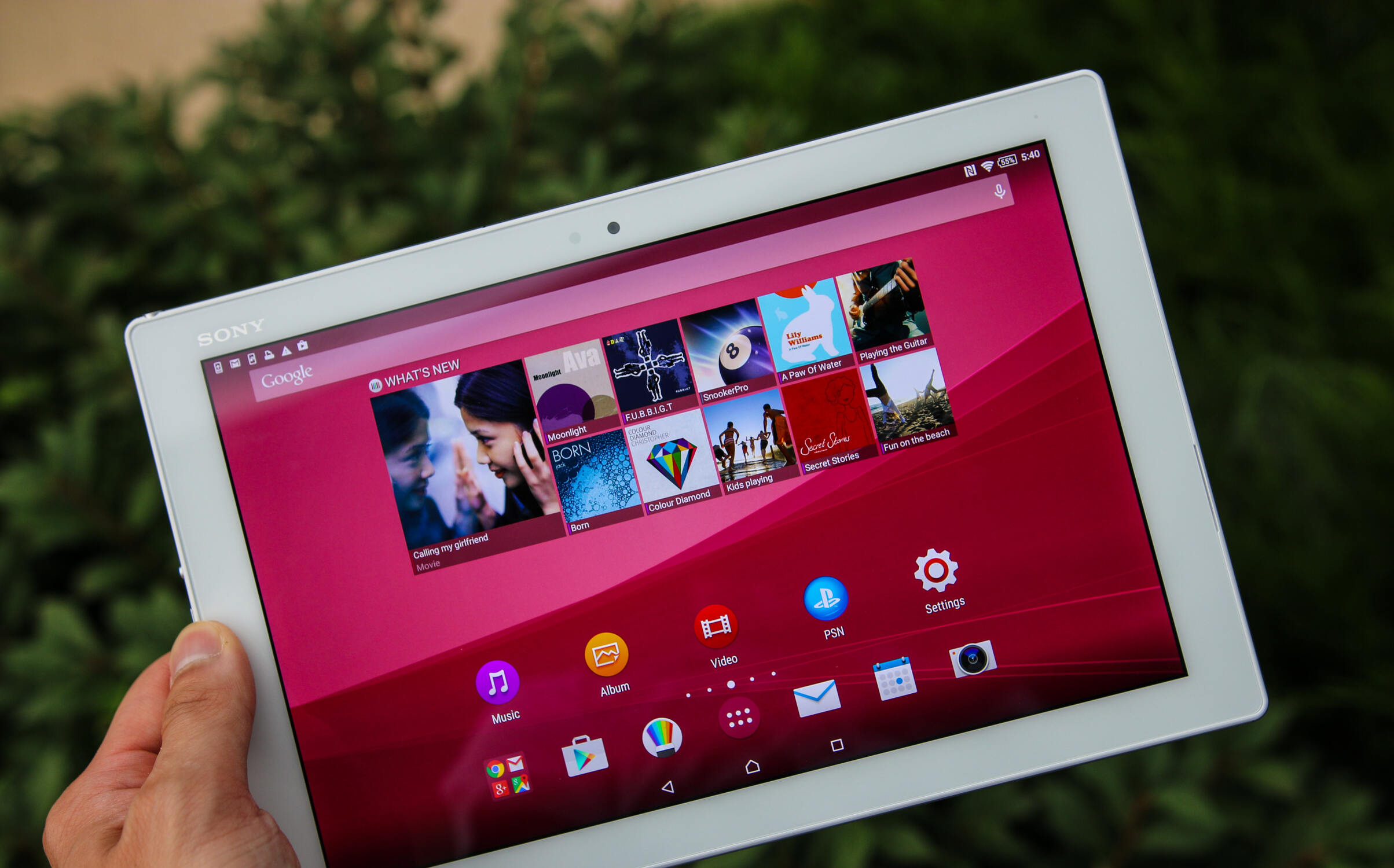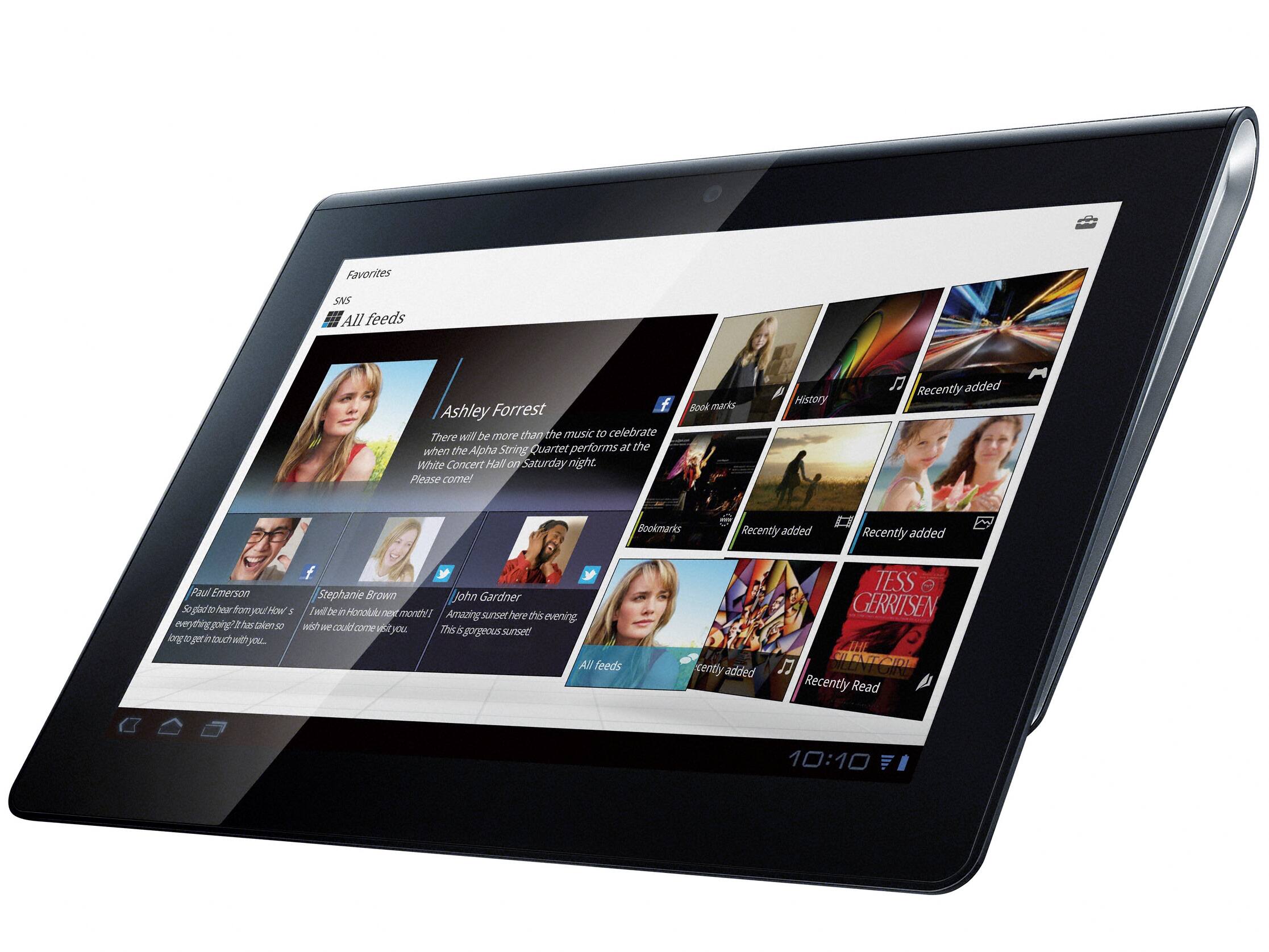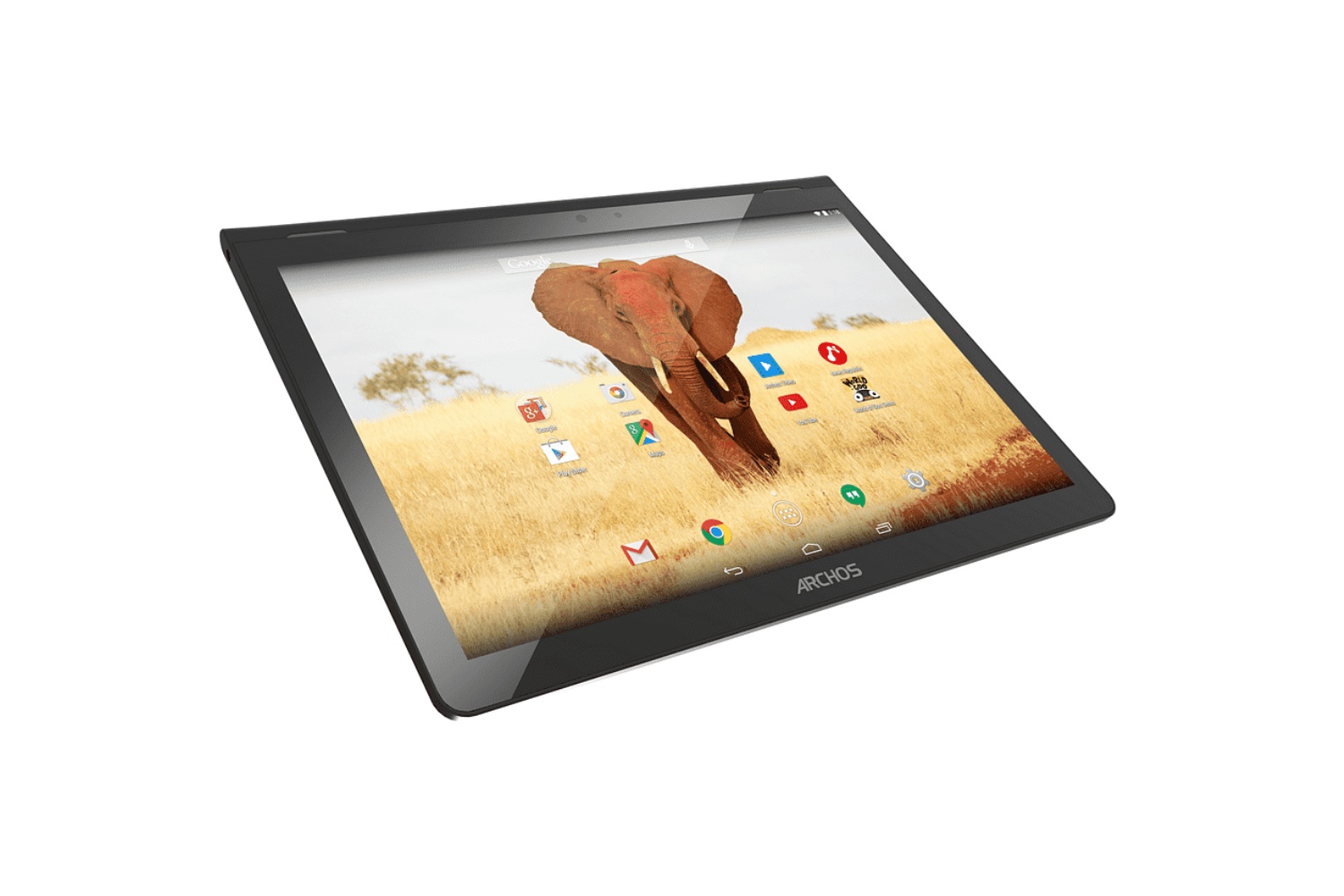Introduction
Welcome to our guide on how to root the Shield Tablet running on the 5.1.1 Android version. The Shield Tablet is a powerful and versatile device, but by rooting it, you can unlock even more potential and have greater control over your device. Rooting allows you to access the system files and make modifications that are otherwise restricted by the manufacturer. In this guide, we will take you through the step-by-step process of rooting your Shield Tablet and enjoying the benefits of a rooted device.
Note: Rooting your device can void your warranty and may have some risks associated with it. It is important to understand the process and proceed with caution. Make sure to backup your data before starting, as the rooting process may erase all your data.
By rooting your Shield Tablet, you can enjoy various benefits, such as:
- Customization: With root access, you can install custom ROMs, themes, and mods to personalize your tablet’s appearance and functionality.
- Bloatware Removal: Rooting allows you to uninstall pre-installed apps (bloatware) that you don’t need, freeing up valuable storage space.
- Performance Optimization: After rooting, you can optimize the tablet’s performance by overclocking the CPU, tweaking system settings, and using performance-enhancing apps.
- App Compatibility: Some apps require root access to fully function. By rooting your Shield Tablet, you can use these apps and enjoy their advanced features.
- Backup and Recovery: Rooting enables you to use powerful backup and recovery apps, allowing you to easily create full system backups and restore them if needed.
Before you proceed with rooting your Shield Tablet, there are a few important things you should consider:
- Read the Instructions: Thoroughly understand the rooting process before starting. Follow the steps carefully and double-check each step to avoid any mistakes.
- Backup Your Data: It is essential to create a backup of your important files, contacts, and apps before rooting. This ensures that you can restore your data if anything goes wrong during the process.
- Research Compatible Methods: Make sure the rooting method you choose is specifically designed for your Shield Tablet model and Android version. Using an incompatible method may result in unexpected issues or device bricking.
- Understand the Risks: Rooting your device can void warranty, and there is always a risk of damaging your tablet if not done correctly. Proceed at your own risk, and be prepared for any consequences that may arise.
Once you have taken these considerations into account, you are ready to proceed with the rooting process. Ensure you have some time allocated as this process may take a while. Follow the upcoming steps carefully, and soon you will have a rooted Shield Tablet with extended capabilities!
What is Rooting?
Rooting is the process of gaining privileged access, also known as root access, to the Android operating system. By rooting your device, you can access and modify the system files and settings that are usually restricted by the manufacturer. This gives you greater control over your device and allows you to customize and optimize it according to your preferences.
Root access enables you to perform various advanced tasks on your Shield Tablet, such as:
- Removing Bloatware: Many Android devices come with pre-installed apps that you may not use or need. These apps take up valuable storage space and can potentially affect your device’s performance. By rooting your Shield Tablet, you can uninstall such bloatware and free up space for apps and files that matter to you.
- Customizing the User Interface: Rooting gives you the freedom to install custom ROMs, which are modified versions of the Android operating system. With custom ROMs, you can customize the look and feel of your device, change the system fonts, icons, and even add new features that are not available in the stock ROM.
- Boosting Performance: Rooting allows you to optimize the performance of your Shield Tablet. You can use various apps and tweaks specifically designed for rooted devices to overclock the CPU, enhance system performance, and improve battery life.
- Backups and Restores: Rooting gives you access to powerful backup and restore apps that can create full backups of your device’s system and data. In the event of a software issue or if you want to revert to a previous state, you can easily restore your device to a working state using these backups.
- Installing Incompatible Apps: Some apps may require root access to function to their full potential. By rooting your Shield Tablet, you can bypass these restrictions and enjoy the advanced features that these apps offer.
It is important to note that rooting your Shield Tablet comes with both advantages and potential risks. While rooting can unlock a world of possibilities, it also has some drawbacks. Some of these risks include:
- Voiding Warranty: Rooting your device typically voids the manufacturer’s warranty. This means that if any hardware or software issues arise after rooting, the manufacturer may refuse to provide support or repair your device free of charge.
- Bricking: Improperly rooting your Shield Tablet can lead to a “bricked” device, where it becomes inoperable and cannot be restored to a working state. This can happen if you make a mistake during the rooting process or use incompatible methods.
- Security Risks: Rooting opens up your device to potential security vulnerabilities. When you have root access, apps or malicious software can gain access to sensitive system files and data, putting your device and personal information at risk.
It is essential to weigh these risks against the benefits and consider them before deciding to root your Shield Tablet. Make sure you thoroughly research and understand the rooting process to minimize any potential risks and ensure a smooth and successful rooting experience.
Benefits of Rooting
Rooting your Shield Tablet can provide a range of benefits that greatly enhance your device’s functionality and customization options. By gaining root access, you can unlock the full potential of your tablet and enjoy the following advantages:
- Custom ROMs and Themes: Rooting allows you to install custom ROMs, which are modified versions of the Android operating system. These custom ROMs offer a wide array of customized features, improved performance, and unique visual styles. You can also apply custom themes that completely transform the look and feel of your Shield Tablet.
- Complete Control over System Apps: With root access, you can remove or disable system apps (also known as bloatware) that come pre-installed on your device. This frees up valuable storage space and helps improve performance by reducing unnecessary background processes.
- Performance Optimization: Rooting enables you to tweak various system parameters and settings to optimize your Shield Tablet’s performance. You can overclock the CPU for faster processing, underclock it for power saving, or adjust other settings like the system scheduler to enhance multitasking capabilities.
- Advanced Backup and Restore: Root access allows you to perform full system backups, including all apps, settings, and data. You can utilize powerful backup tools that offer more control and flexibility compared to standard backup options. In case of any issues or if you wish to revert to a previous state, you can easily restore your tablet to a working condition.
- Install Incompatible Apps: Some apps require root access to unlock certain features or functionalities. By rooting your Shield Tablet, you can install and use these applications to their full potential. Whether it’s a powerful system utility, a customization tool, or an app that requires access to system files, root access allows you to fully utilize these apps.
- Ad Blocking: Rooting enables you to block advertisements system-wide by using ad-blocking apps. These apps can remove ads from apps, websites, and even games, providing a more streamlined and ad-free user experience.
- Enhanced Battery Life: With root access, you can utilize power-saving apps and tools that help optimize battery usage. You can disable or limit background processes, control app permissions, and customize system-level power settings to prolong your Shield Tablet’s battery life.
- Wi-Fi and Bluetooth Tethering: Rooting facilitates the use of tethering apps, allowing you to share your tablet’s internet connection with other devices through Wi-Fi or Bluetooth. This can be useful when you don’t have access to a stable Wi-Fi network or need internet connectivity on other devices.
- Greater File Access: With root access, you can explore and modify system files and directories that are otherwise inaccessible. This gives you more control over your device’s file system, allowing you to customize system sounds, boot animations, and other system-level resources.
Keep in mind that while rooting offers a multitude of benefits, it also comes with risks. It’s important to thoroughly understand the rooting process, backup your data, and proceed with caution. By weighing the advantages against the potential risks, you can make an informed decision about whether rooting your Shield Tablet is the right choice for you.
Before You Begin
Before you embark on the rooting process for your Shield Tablet, there are a few important factors to consider and steps to take in order to ensure a smooth and successful rooting experience. By following these guidelines, you can minimize risks and maximize the chances of a problem-free rooting process:
1. Research and Understand: Take the time to thoroughly research and understand the rooting process specific to your Shield Tablet model and Android version. Different devices may have varying methods, and it’s crucial to choose the correct rooting method to avoid any potential issues.
2. Backup Your Data: It is vital to create a full backup of your tablet’s data before proceeding. Rooting could potentially result in data loss or even a complete wipe of your device. By backing up your important files, documents, contacts, and photos, you can ensure that your data is safe and can be easily restored if needed.
3. Charge Your Tablet: Make sure your Shield Tablet is adequately charged before starting the rooting process. A low battery level could lead to unexpected issues during the rooting process or even device failure. It is recommended to have at least 50% battery to ensure a stable and uninterrupted rooting process.
4. Enable Developer Options: In order to access the necessary settings for the rooting process, you need to enable Developer Options on your Shield Tablet. To do this, go to Settings > About Tablet and tap on the Build Number 7 times. This will unlock Developer Options on your device.
5. Enable USB Debugging: USB Debugging is a critical setting that allows your Shield Tablet to communicate with the computer during the rooting process. To enable USB Debugging, go to Settings > Developer Options and toggle on the USB Debugging option.
6. Install ADB and Fastboot Drivers: ADB (Android Debug Bridge) and Fastboot are essential tools for the rooting process. You need to install the drivers for these tools on your computer before proceeding. You can find the necessary drivers and installation instructions on the Android developer website.
7. Unlock Bootloader: Some devices require unlocking the bootloader before rooting. Check if your Shield Tablet’s bootloader needs to be unlocked and follow the manufacturer’s instructions to unlock it. Be aware that unlocking the bootloader may void your warranty and could result in data loss.
8. Consider Rooting Methods: There are various methods available for rooting your Shield Tablet, including one-click root tools, custom recoveries, or manual rooting using ADB commands. Research and choose a method that is suitable for your device and level of technical expertise.
9. Prepare for Potential Risks: Rooting your Shield Tablet voids the manufacturer’s warranty and carries certain risks. It’s important to be aware of these risks, such as bricking your device or potential security vulnerabilities. Make sure you fully understand the implications and proceed at your own risk.
By considering these factors and taking the necessary steps, you can prepare yourself and your Shield Tablet for the rooting process. Remember to proceed with caution, follow the instructions carefully, and be prepared to face any potential challenges that may arise before you can enjoy the full benefits of a rooted Shield Tablet.
Step 1: Enable Developer Options
Before proceeding with the rooting process on your Shield Tablet, it is essential to enable Developer Options on your device. Developer Options provide access to advanced settings and features that are typically hidden to regular users. Follow the step-by-step instructions below to enable Developer Options:
1. Open the Settings Menu: On your Shield Tablet, navigate to the app drawer and tap on the Settings app. The Settings icon typically resembles a gear or cogwheel.
2. Scroll Down and Find About Tablet: In the Settings menu, scroll down and find the “About Tablet” option. Tap on it to access the system information of your device.
3. Locate Build Number: In the About Tablet menu, scroll down until you find the “Build Number” entry. This may be listed under different headings depending on your device’s manufacturer or Android version.
4. Tap on Build Number: Once you have located the Build Number, tap on it repeatedly. You will need to tap on it seven times in quick succession.
5. Enter PIN or Password if prompted: After tapping on Build Number seven times, you may be asked to enter your device’s PIN or Password. This is to verify your identity and ensure that only authorized users can access the Developer Options.
6. Developer Options Enabled: After entering the correct PIN or Password, a message will appear stating that Developer Options has been enabled on your Shield Tablet.
7. Access Developer Options: Now that Developer Options is enabled, you can access it by going back to the main Settings menu. Scroll down, and you will find a new option called “Developer Options.” Tap on it to open the Developer Options menu.
8. Customize Developer Options: Within Developer Options, you will find a range of advanced settings and features. You can explore and modify these settings to suit your needs, but be cautious as some changes may affect the stability or performance of your device.
Enabling Developer Options is an essential step in the rooting process, as it allows you to access settings necessary for the rooting procedure. Be aware that these options are intended for advanced users and should be used with caution. It is recommended to consult reliable sources or forums for guidance on specific settings before making any changes.
With Developer Options now enabled on your Shield Tablet, you are ready to proceed to the next steps in the rooting process. Each step brings you closer to unlocking the full potential of your device and enjoying the benefits of a rooted Shield Tablet.
Step 2: Enable USB Debugging
To successfully root your Shield Tablet, you need to enable USB Debugging. USB Debugging allows your device to communicate with your computer and facilitates the transfer of data during the rooting process. Follow the step-by-step instructions below to enable USB Debugging:
1. Access Developer Options: Open the Settings app on your Shield Tablet, and scroll down to find the “Developer Options” menu. If you have not enabled Developer Options yet, refer to the previous section for instructions on how to do so.
2. Open Developer Options: Tap on the “Developer Options” menu to open its settings.
3. Locate USB Debugging: In the Developer Options menu, scroll down until you find the “USB Debugging” option.
4. Enable USB Debugging: Tap on the toggle switch next to USB Debugging to enable it. You may be prompted with a warning message stating that enabling USB Debugging allows your device to be vulnerable to potential security risks. Read the message carefully and tap “OK” to proceed.
5. Verify USB Debugging: Once USB Debugging is enabled, you should see a checkmark next to the USB Debugging option. This confirms that USB Debugging is now active on your Shield Tablet.
6. Connect Your Tablet to Your Computer: Use a USB cable to connect your Shield Tablet to your computer. Make sure the cable is securely connected on both ends.
7. USB Debugging Authorization: When connecting your tablet to your computer for the first time with USB Debugging enabled, you may be prompted to authorize the connection. Check your tablet’s screen for any “Allow USB Debugging” or “Allow ADB access” prompts. Tap on “Allow” or “OK” to authorize the connection.
Note: If you are using a Windows computer and encounter any issues with USB Debugging, you may need to install the appropriate USB drivers for your Shield Tablet. Check the manufacturer’s website or resources specific to your device model for the correct drivers.
Enabling USB Debugging is a crucial step that ensures your Shield Tablet can communicate with your computer during the rooting process. It allows the necessary data transfer for rooting tools and commands to function correctly. With USB Debugging enabled, you are now ready to proceed to the next step in the rooting process.
Step 3: Install ADB and Fastboot Drivers
In order to successfully root your Shield Tablet, you need to install the ADB (Android Debug Bridge) and Fastboot drivers on your computer. ADB and Fastboot are essential tools that allow communication between your computer and your device during the rooting process. Follow the steps below to install the ADB and Fastboot drivers:
1. Download the ADB and Fastboot Drivers: Visit the official Android developer website or a trusted source to download the ADB and Fastboot drivers for your computer’s operating system. These drivers are available for Windows, macOS, and Linux.
2. Extract the Driver Files: Once the driver file is downloaded, extract it to a location on your computer, such as the desktop or a specific folder. This will create a folder containing the necessary driver files.
3. Enable USB Debugging (if not already done): Refer to Step 2 in this guide to enable USB Debugging on your Shield Tablet. USB Debugging must be enabled for the ADB and Fastboot drivers to function properly.
4. Connect Your Tablet to Your Computer: Use a USB cable to connect your Shield Tablet to your computer. Make sure the cable is securely connected on both ends.
5. Launch Device Manager (Windows) or Terminal (macOS/Linux): On Windows, press the Windows key and “R” simultaneously, then type “devmgmt.msc” and hit Enter. This will open the Device Manager. On macOS/Linux, open the Terminal application.
6. Locate the Shield Tablet: In the Device Manager (Windows), expand the “Portable Devices” or “Other Devices” category. Look for your Shield Tablet’s name or any device with a yellow exclamation mark indicating a driver issue. In the Terminal (macOS/Linux), enter the command “adb devices” and press Enter. Make sure your Shield Tablet is listed under “List of devices attached.”
7. Update the Driver (Windows): Right-click on your Shield Tablet’s name in the Device Manager and select “Update Driver.” Choose the option to manually select the driver, then browse to the folder where you extracted the ADB and Fastboot drivers in Step 2. Select the appropriate driver file and follow the on-screen instructions to install it.
8. Confirm Driver Installation: After the driver installation is complete, the Shield Tablet should be recognized by your computer without any warnings or errors. In the Device Manager (Windows), your device should now be listed under “Android Phone” or a similar category.
Note: If you encounter any issues during the driver installation process, ensure that USB Debugging is enabled on your Shield Tablet and that you have the correct driver files for your specific device model and operating system.
Installing the ADB and Fastboot drivers is a crucial step in the rooting process, as they allow your computer to communicate with your Shield Tablet. With the drivers installed successfully, you are now ready to proceed with the remaining steps of the rooting process.
Step 4: Unlock Bootloader
Before proceeding with the rooting process on your Shield Tablet, you may need to unlock the bootloader. The bootloader is a security feature that prevents unauthorized modifications to the device’s software. Unlocking the bootloader is necessary to install custom recoveries and gain root access. Follow the steps below to unlock the bootloader of your Shield Tablet:
1. Backup Your Data: Before unlocking the bootloader, ensure that you have backed up all important data on your Shield Tablet. Unlocking the bootloader may erase all data on your device, including apps, settings, and personal files.
2. Enable Developer Options and USB Debugging (if not already done): Refer to Step 1 and Step 2 in this guide to enable Developer Options and USB Debugging on your Shield Tablet. These options must be enabled to proceed with the bootloader unlocking process.
3. Install ADB and Fastboot Drivers (if not already done): Refer to Step 3 in this guide to install the ADB and Fastboot drivers on your computer. These drivers are necessary for the bootloader unlocking process.
4. Reboot into Fastboot Mode: Power off your Shield Tablet completely. Then, press and hold the Volume Down button and the Power button simultaneously until the device boots into the Fastboot mode. In Fastboot mode, you will see a screen with the Fastboot logo on your Shield Tablet.
5. Connect Your Tablet to Your Computer: Use a USB cable to connect your Shield Tablet to your computer. Make sure the cable is securely connected on both ends.
6. Open Command Prompt or Terminal: On Windows, press the Windows key and “R” simultaneously, then type “cmd” and hit Enter to open Command Prompt. On macOS/Linux, open the Terminal application.
7. Verify Fastboot Connection: In the Command Prompt or Terminal, enter the command “fastboot devices” and press Enter. If your Shield Tablet is listed along with a device ID, it means that the fastboot connection is successful.
8. Unlock the Bootloader: In the Command Prompt or Terminal, enter the command “fastboot oem unlock” and press Enter. This command will initiate the bootloader unlocking process on your Shield Tablet.
9. Confirm Unlocking: A confirmation message will appear on your Shield Tablet’s screen, warning you that your warranty may be voided and data may be erased. Use the volume keys to highlight “Yes” and press the Power button to confirm and proceed with unlocking the bootloader.
10. Wait for Bootloader Unlock: The bootloader unlocking process may take a few moments. Once it is complete, your Shield Tablet will automatically reboot.
11. Re-enable Developer Options and USB Debugging: After the bootloader is unlocked, your Shield Tablet will perform a factory reset, which disables Developer Options and USB Debugging. Remember to re-enable these options if necessary for future modifications.
Note: The bootloader unlocking process may vary slightly depending on your device model and manufacturer’s instructions. Make sure to reference specific guides or forums that provide instructions tailored to your Shield Tablet model.
With the bootloader successfully unlocked on your Shield Tablet, you are now one step closer to rooting your device. The next steps will involve flashing a custom recovery and installing the necessary files to achieve root access.
Step 5: Backup Your Data
Before proceeding with the rooting process for your Shield Tablet, it is crucial to create a backup of your data. This step ensures that your important files, apps, and personal data are safe in case of any unforeseen issues during the rooting process. Follow the steps below to backup your data:
1. Sync Your Data: Make sure all your apps and data are synced with your Google account. This includes contacts, calendar events, app data, and other synchronized information. Ensure that your Shield Tablet is connected to the internet, and the sync settings are turned on.
2. Use Cloud Storage Services: Upload your important files, documents, photos, and videos to cloud storage services like Google Drive, Dropbox, or OneDrive. This ensures that your files are securely stored in the cloud and accessible from other devices.
3. Transfer Files to Computer: Connect your Shield Tablet to your computer using a USB cable. Copy any important files and folders from your tablet to your computer’s hard drive. This can include documents, photos, videos, and other files that you want to keep safe during the rooting process.
4. Use Backup Apps: There are various backup apps available on the Google Play Store that allow you to create a complete backup of your Shield Tablet’s system and app data. Examples of such apps include Titanium Backup, Helium, and MyBackup Pro. Install a reliable backup app of your choice, and follow the instructions within the app to create a full backup of your device.
5. Take Screenshots of App Settings: If you have customized settings within specific apps, take screenshots of those settings as a reference for later. This will help you easily restore your preferred settings after the rooting process is complete.
6. Make a Note of App List: Take note of the apps installed on your Shield Tablet by making a list. This will help you remember which apps you had installed previously, making it easier to reinstall them later.
Remember that the rooting process may involve wiping your Shield Tablet or performing a factory reset, which erases all data on the device. By backing up your data, you can ensure that your important files and app data are safely stored, ready to be restored after the rooting process completes.
Take the time to verify that your backup is complete and accessible before proceeding to the next steps. This helps to alleviate any concerns of data loss during the rooting process. With your data safely backed up, you are now ready to move on to the next steps in rooting your Shield Tablet.
Step 6: Download the Rooting Package
Now that you have prepared your Shield Tablet for the rooting process, the next step is to download the rooting package. The rooting package consists of the necessary files and tools that will enable you to gain root access on your device. Follow the steps below to download the rooting package:
1. Research the Rooting Package: Before downloading any rooting package, it is important to research and find a reliable source for the specific rooting method that is compatible with your Shield Tablet model and Android version. Look for reputable forums or websites that provide trusted rooting packages.
2. Verify Compatibility: Ensure that the rooting package you choose is specifically designed for your Shield Tablet model and Android version. Using an incompatible rooting package may result in errors or even brick your device.
3. Download the Rooting Package: Once you have found a reliable source for the rooting package, download it to your computer. The package may be in the form of a ZIP file or a standalone executable file. Ensure that you save the file in an easily accessible location on your computer.
4. Scan the Rooting Package: Before proceeding with the rooting process, it is highly recommended to scan the downloaded rooting package for any potential malware or viruses using an up-to-date antivirus software. This will help protect your computer and ensure the integrity of the rooting files.
5. Extract the Rooting Package (if applicable): If the downloaded rooting package is in the form of a ZIP file, you may need to extract its contents using a file extraction tool such as WinRAR or 7-Zip. Extract the files to a new folder on your computer for easy access during the rooting process.
6. Verify the Contents: Once the rooting package is downloaded and extracted (if necessary), verify the contents of the package. Check that all the required files and tools are present and intact. Refer to the documentation or instructions provided with the rooting package to ensure that you have all the necessary files for the rooting process.
Note: It is important to only download rooting packages from trusted sources to mitigate any potential risks. An unreliable or modified rooting package can cause damage to your Shield Tablet or compromise its security.
With the rooting package successfully downloaded and verified, you are now ready to proceed to the next steps in the rooting process. Keep the rooting package and its contents readily accessible as you will need to refer to them in the upcoming steps to gain root access on your Shield Tablet.
Step 7: Boot Shield Tablet into Fastboot Mode
Entering Fastboot Mode is an important step in the rooting process for your Shield Tablet. Fastboot Mode is a special booting mode that allows you to execute commands and flash files on your device via a computer. Follow the steps below to boot your Shield Tablet into Fastboot Mode:
1. Power off your Shield Tablet: Press and hold the Power button on your Shield Tablet until the Power menu appears. Then, select the “Power Off” or “Shut Down” option to turn off your device completely.
2. Press and hold the appropriate buttons: Once your Shield Tablet is powered off, press and hold the Volume Down button and the Power button simultaneously.
3. Continue holding the buttons: Keep holding the Volume Down button and the Power button until the Fastboot Mode screen appears. You will see the Fastboot logo or a Fastboot Mode message on your Shield Tablet’s screen.
4. Verify the Fastboot Mode: To confirm that your Shield Tablet has successfully entered Fastboot Mode, connect it to your computer using a USB cable. Open a command prompt or terminal window on your computer and enter the command “fastboot devices”. If your Shield Tablet is recognized and listed, it means that your device is in Fastboot Mode and ready for further actions.
5. Proceed with the Rooting Process: With your Shield Tablet in Fastboot Mode, you can now proceed with the next steps in the rooting process, such as flashing a custom recovery or installing the necessary files to gain root access.
Note: If you encounter any issues or your Shield Tablet does not enter Fastboot Mode, double-check that you are using the correct button combination and that the buttons are being pressed simultaneously. If the issue persists, consult device-specific forums or consult the manufacturer’s documentation for troubleshooting tips.
Boot your Shield Tablet into Fastboot Mode carefully, ensuring that you follow the steps accurately. Once your device is in Fastboot Mode, you are now ready to proceed to the next steps in the rooting process, which will involve executing commands and flashing files to gain root access on your Shield Tablet.
Step 8: Flash Custom Recovery
Flashing a custom recovery is a crucial step in the rooting process for your Shield Tablet. A custom recovery allows you to install custom ROMs, create backups, and perform other advanced system modifications. Follow the steps below to flash a custom recovery on your Shield Tablet:
1. Download the Custom Recovery: Search for a reputable source that provides custom recoveries specifically designed for your Shield Tablet model and Android version. Download the appropriate custom recovery file (.img extension) to your computer.
2. Enable USB Debugging (if not already done): Refer to Step 2 in this guide to enable USB Debugging on your Shield Tablet. USB Debugging must be enabled to execute commands and perform the flashing process.
3. Connect Your Tablet to Your Computer: Use a USB cable to connect your Shield Tablet to your computer. Make sure the cable is securely connected on both ends.
4. Boot into Fastboot Mode: Refer to Step 7 to boot your Shield Tablet into Fastboot Mode. Ensure that you successfully enter Fastboot Mode before proceeding with the flashing process.
5. Open Command Prompt or Terminal: On Windows, press the Windows key and “R” simultaneously, then type “cmd” and hit Enter to open Command Prompt. On macOS/Linux, open the Terminal application.
6. Change Directory: In the Command Prompt or Terminal, navigate to the folder where you downloaded the custom recovery file. You can use the “cd” command followed by the appropriate folder path to change the directory.
7. Flash Custom Recovery: In the Command Prompt or Terminal, enter the command “fastboot flash recovery [recoveryfilename.img]” and press Enter. Replace “[recoveryfilename.img]” with the actual filename of the custom recovery file you downloaded. The flashing process will begin, and you will see the progress in the Command Prompt or Terminal window.
8. Verify Successful Flashing: Once the custom recovery is flashed, enter the command “fastboot reboot” to reboot your Shield Tablet. During the boot process, press the appropriate button combination to enter the custom recovery mode (e.g., Volume Up + Power buttons). If the custom recovery screen appears, it means that the flashing process was successful.
Note: Custom recovery options may vary depending on the specific custom recovery you installed. It is recommended to explore and familiarize yourself with the features and options available in the custom recovery before proceeding with any further modifications.
With the custom recovery successfully flashed on your Shield Tablet, you can now utilize its advanced features for further system modifications. The next steps in the rooting process will involve installing the SuperSU package to gain root access on your device.
Step 9: Install SuperSU
After successfully flashing the custom recovery on your Shield Tablet, the next step in the rooting process is to install the SuperSU package. SuperSU is a popular root management tool that grants and manages root access on Android devices. Follow the steps below to install SuperSU on your Shield Tablet:
1. Download the SuperSU Package: Search for a trusted source that provides the SuperSU package compatible with your Shield Tablet model and Android version. Download the latest SuperSU ZIP file to your computer.
2. Transfer the SuperSU ZIP file to your Shield Tablet: Connect your Shield Tablet to your computer using a USB cable. Transfer the downloaded SuperSU ZIP file to the internal storage or SD card of your device. Remember the location where you saved the file, as you will need to access it when installing SuperSU.
3. Boot into Custom Recovery Mode: Power off your Shield Tablet completely. Then, press and hold the appropriate button combination (e.g., Volume Up + Power buttons) to boot into the custom recovery mode that you flashed in the previous step.
4. Navigate to Install or Install ZIP: Use the volume rocker keys to navigate through the options in the custom recovery. Look for an option that says “Install” or “Install ZIP” and select it by pressing the power button or a dedicated confirm button.
5. Choose the SuperSU ZIP file: Browse through the internal storage or SD card of your Shield Tablet to locate the SuperSU ZIP file that you transferred in Step 2. Once you find it, select the SuperSU ZIP file to initiate the installation process.
6. Confirm the installation: On the next screen, confirm that you want to install the SuperSU ZIP file. Some custom recoveries may require additional swipe or confirm gestures, while others may have a dedicated confirm button. Follow the on-screen instructions to proceed with the installation.
7. Wait for the installation to complete: The installation process may take a few moments. Keep an eye on the progress bar or any messages displayed on the custom recovery screen. Once the SuperSU installation is complete, you will see a success message or a prompt to reboot your device.
8. Reboot your Shield Tablet: After the SuperSU installation is complete, select the option to reboot your Shield Tablet from the custom recovery menu. This will restart your device and finalize the rooting process.
Note: After your Shield Tablet reboots, you should now have root access. You can verify this by installing a root checker app from the Google Play Store and running it on your device.
By installing SuperSU, you have successfully gained root access on your Shield Tablet. This grants you full control over system files and allows you to customize and optimize your device further. However, it is important to remember that with great power comes great responsibility, and caution should be exercised when making any system-level modifications.
Step 10: Reboot and Verify Root Access
After installing SuperSU and completing the rooting process, the final step is to reboot your Shield Tablet and verify that you have successfully gained root access. Follow the steps below to reboot and confirm root access on your device:
1. Reboot your Shield Tablet: Exit the custom recovery mode by selecting the option to reboot your device. This will restart your Shield Tablet and bring it back to the normal operating mode.
2. Wait for the Reboot: Give your Shield Tablet a few moments to fully reboot. The first boot after rooting may take slightly longer than usual, so be patient during this process.
3. Launch an App that Requires Root Access: To verify root access, open an app that requires root permissions. This can be a root checker app, a file manager with root capabilities, or any other app that you know requires root access to function properly.
4. Grant SuperSU Permissions: When you launch an app that requires root access, SuperSU should prompt you with a pop-up asking for permission. Grant the necessary permissions by selecting “Grant” or “Allow” when prompted. This allows the app to access the root-level privileges.
5. Verify Root Access: Once you have granted the app root permissions, it should be able to function with full root access. The app may display a message or status indicating that root access has been successfully granted. Additionally, you can use a root checker app from the Google Play Store to confirm root access on your Shield Tablet.
Note: If you do not see the SuperSU prompt or encounter any issues when trying to grant root permissions, double-check that SuperSU is properly installed and updated. Revisit the earlier steps to ensure that you have followed each step correctly.
Verifying root access is essential to ensure that the rooting process was successful. With root access, you can now enjoy the full benefits and customization options that come with having complete control over your Shield Tablet. It is important to remember that with root access, you also bear the responsibility of using it wisely and cautiously to avoid any potentially harmful actions to your device or data.
Conclusion
Congratulations! You have successfully completed the rooting process for your Shield Tablet. By gaining root access, you have unlocked a world of possibilities and taken control over your device’s functionality and customization options. Rooting your Shield Tablet allows you to install custom ROMs, remove bloatware, optimize performance, and enjoy a range of powerful root-only apps.
Throughout this guide, we covered the essential steps required to root your Shield Tablet. We started by enabling Developer Options and USB Debugging, then proceeded to install ADB and Fastboot drivers. Next, we unlocked the bootloader, backed up our data, downloaded the rooting package, and flashed a custom recovery. After that, we installed SuperSU, and finally, verified our root access.
However, it’s important to note that rooting your Shield Tablet comes with certain risks and considerations. Rooting may void your warranty, expose your device to security vulnerabilities if not managed carefully, and could potentially result in data loss or even device damage if performed incorrectly. It is essential to thoroughly research each step, use trusted sources, and proceed with caution.
Remember to always keep your Shield Tablet’s software updated and exercise caution when granting root access to apps or making system modifications. Regularly back up your data and ensure you have reliable resources and support available in case any issues arise.
Now that you have successfully rooted your Shield Tablet, take some time to explore the various customization options available. Install custom ROMs, tweak system settings, and enjoy the freedom and flexibility that root access provides. However, always be mindful of the potential risks and consequences associated with rooting, and proceed responsibly.
We hope this guide has been helpful in assisting you through the rooting process for your Shield Tablet. Enjoy your newly rooted device and make the most out of the enhanced capabilities and customization options that root access brings!







